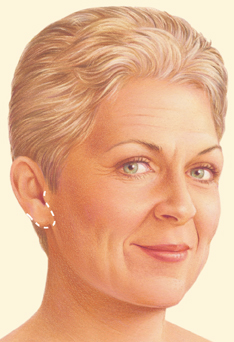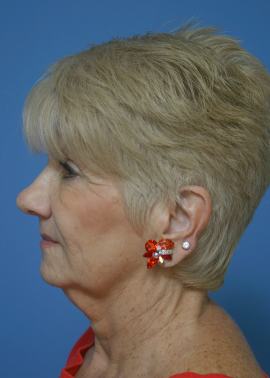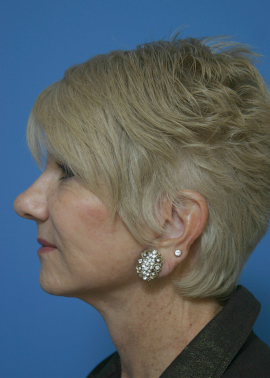Facelift & Mini Facelift in Detroit, MI
Over time, the long-term effects of gravity, exposure to sun, dry air, and general stress takes its toll on an individual’s face and neckline. A facelift can considerably reduce these signs of aging. There are many kinds of facelift surgeries, from the traditional ‘skin-only’ facelifts to lunchtime facelifts to 3-D Facelifts.
What types of facelifts are there?
Facelifts can be categorized into a few different types. In general, ALL facelifts entail cutting the skin around the ears and pulling the skin of the face back to remove the excess. This can result in a smoother jawline, less fat in the neck, and an overall younger look. There is no such thing as a nonsurgical facelift.
The least invasive facelifts are usually the “lunchtime facelifts.” These range from suture-only lifts, such as the Contour Threadlift and the Silhouette Lift, to the “one-hour” types of facelifts. The one-hour lifts include those “revolutionary” lunchtime facelifts you see on TV infomercials, with impressive, but misleading results.
The studies performed with the suture-only lifts showed results which lasted only a year or so, however the sutures stay in your face forever (long after the results have faded). Many companies which produced the barbed sutures used in these lifts have discontinued making them. Very few surgeons perform suture-only lifts anymore.


What to remember about ‘lunchtime facelifts’ advertised on TV:
- The before-and-after photos are not your surgeon’s work – they are patients operated on several years ago by a different doctor.
- The ‘patient coordinator’ who discusses the surgery with you is paid on commission – they are not medical professionals, but more like used-car salespeople.
- Your surgeon will operate on you and then likely disappear – the surgeons are not paid to take care of you after surgery, only during it.
- The only surgeons that work for these bargain-basement cosmetic surgery centers are typically desperate for work – otherwise they would have a normal, ethical practice.
- If it sounds too good to be true, it probably is.
Most ‘real’ facelifts entail a combination of removal of skin, tightening up of the underlying muscle (called the SMAS and platysma), and removal of excess fat. Every plastic surgeon performs their facelifts differently. Some well-respected facelift techniques include the MACS Lift, the Composite Facelift, the Deep Plane Facelift, all types of SMAS-tightening facelifts, and the 3-D Volumetric Facelift. The difference in results for any of these types of facelifts vary per surgeon and patient. Most of these types of facelifts have been proven to have high satisfaction rates.
Where are the scars of a facelift?
The scars of a more traditional facelift or a mini facelift extend from the top of the ears, around the earlobe, and in the crease behind the ear. Some plastic surgeons extend the scar into the temple area, although Dr. Youn prefers not to do this. In people with very heavy necks, the scar can also extend somewhat down the hairline in the back for a better neck lift. The scars usually fade nicely with time, although all patients are at risk of a thick scar depending on how their body heals.


How much pain is there with a facelift?
There is usually very little discomfort with a facelift. Patients may take a few pain pills, although some patients don’t need any at all.
How long does a facelift take?
Dr. Youn’s muscle-tightening lower facelift takes approximately 3 to 4 hours to perform, depending on the amount of work to be done. Minifacelifts take closer to three hours to perform. Most patients look very presentable within 1-2 weeks. All patients have swelling which can last for 4-6 months, however.
What is the 3-D Volumetric Facelift?
Plastic surgeons used to think that a face aged in only 2 dimensions, by sagging of the skin. Hence, traditional facelift techniques treated facial aging by focusing only on tightening. This often left people looking like they were in a wind tunnel after their facelifts. We now know that the face ages in 3 dimensions, by a combination or loosening of the skin and loss of volume, mainly in the cheeks and under the eyes. The 3-D Volumetric Facelift combines a muscle-tightening facelift with volume addition using fat grafting. Therefore the neckline is tightened, but the cheeks are also softened and filled out, creating a true 3-dimensional rejuvenation. Fat is added to the cheeks, under the eyes, and even in the lips if desired. Dr. Youn coauthored a scientific paper in The Aesthetic Surgery Journal which described this technique.

